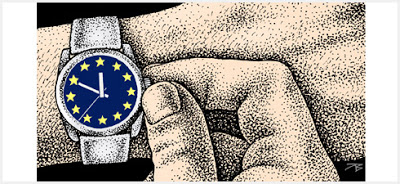Later this month, Europe celebrates the 60th anniversary of the Treaty of Rome, which established the European Economic Community. Very near to the anniversary, which was not one of the original members, will likely begin the process that will lead to its exit. This, coupled with some reluctance of some new members in Eastern and Central Europe to embrace liberal values of the west, and the ongoing economic adjustment in the EMU has posed an existential crisis for European integration.

The European Commission offered a white paper that suggests five future scenarios for the future of Europe. It will be a discussion point in the coming months, with Juncker’s State of the Union speech in September will likely focus on it before preliminary conclusions are madeat the heads of state summit at the end of theyear.
This note is to present the scenarios so that the general framework can be appreciated by investors. The scenarios address the question of what Europe may look like in 2025.They are designed to cover a range of possibilities. They are not mutually exclusive or exhaustive.
1.Carrying on: It is not simply the status quo but assumes the implementation of reform agendas. Free movementof peopleremains, though security is reinforced. Some border frictions remain.
2.Single Market: EU members do not agree on new policy areas to integrate. The focus is on the single market. Free-movement of people becomes more difficult. This returns the EU to its roots.
3.Multi-Speed: The white paper does not use the multi-speed terminology but discusses “coalitions of the willing” that could pursue greater integration on a range of specific policy areas, such as defense, internal security, or social issues. This is a recognition of different appetites for integration.
4.Narrower Focus: The Commission calls this scenario “Doing Less More Efficiently.”Rather than a broad range of activities, the EU narrows its focus to policy areas where it is perceived to add value. This is a smaller form of integration and represents a recognition that some limit has been reached.It is consistent with a strengthening of national identities.









Leave A Comment